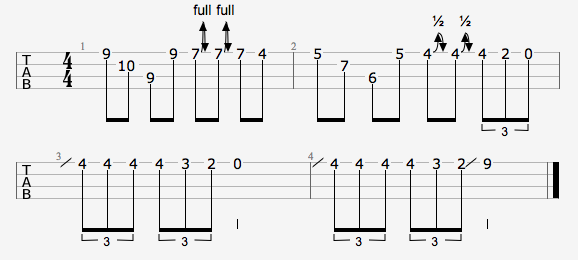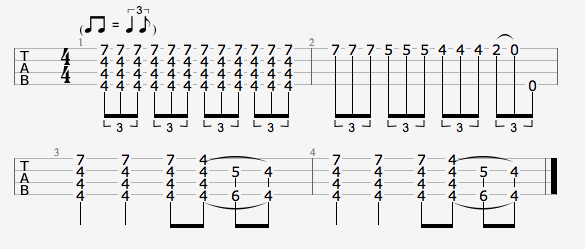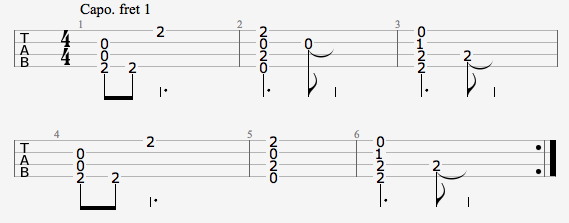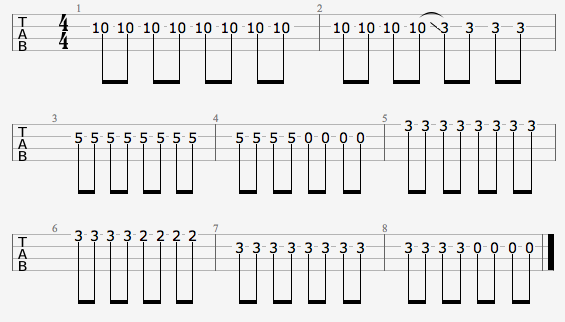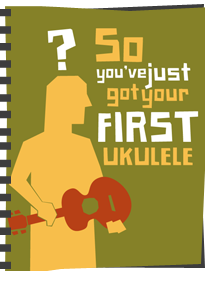Here’s the preliminary list of 2016 ukulele festivals. If you know a festival that needs adding send me a message or leave a comment on this post with the details.
USA and Canada
Alabama Uke Fest
Location: Riverview Campground, Lake Guntersville, Alabama
Date: September 10, 2016
Performers: Ukulele Band of Alabama
Website: http://alabamaukefest.weebly.com
Albuquerque Ukekopelli Festival
Location: African American Performing Arts Center, 310 San Pedro Dr NE, Albuquerque, NM 87108
Date: September 23 to 25, 2016
Performers: Gerald Ross, Heidi Swedberg, Daniel Ward, Andy Andrews, John Bartlit
Website: http://www.abqukefest.com/
Allegheny Ukulele Soiree
Location: The Laurel Lodge, Altoona, PA
Date: April 15 to 17, 2016
Performers: Gerald Ross, Paul Hemmings, Skye Zentz, Colin Coleman and Mim.
Website: http://soiree.alleghenyukes.com/
Ashokan Uke Fest
Location: Conservation Hall, Ashokan Center
Date: May 27 to 30, 2016
Performers: Victoria Vox, Paul Hemmings, Gerald Ross, Del Rey.
Website: http://ashokan.org/uke-fest/
Berliner Ukulele Festival
Location: ufaFabrik, Bezirk Tempelhof-Schöneberg, Viktoriastraße 10-18, 12105 Berlin, Germany
Date: October 29, 2016
Performers: Ukepack, Samuel der Ukulelenprediger, Bad Mouse Orchestra, Iso Herquist, The Gentle Ukes
Website: https://www.facebook.com/Berliner-Ukulele-Festival-1148927605148174/
Blackwater Ukulele Festival
Location: Cypress Gardens
Date: September 18, 2016
Performers: Nathan Miller, The Charleston Hot Shots, The V-Tones of Charleston
Website: http://festival.charlestonhotshots.com/
Caspar UkeFest
Location: Caspar Community Center, 15051 Caspar Road – box 84. Caspar, California 95420
Date: April 29 & 30, 2016
Performers: Del Rey, The Ukeholics, The Ukeladies
Website: http://mendocinostories.com/UkeFest.html
Denver Ukefest
Location: Swallow Hill Music
Date: May 12 to 14, 2016
Performers: Leftover Cuties, Victor & Penny, Victoria Vox, Danielle Ate The Sandwich, Lil’ Rev, Stuart Fuchs.
Website: http://swallowhillmusic.org/events-and-festivals/denver-ukefest/
Dock Street Uke Camp
Location: Shelburne, Nova Scotia, Canada
Date: September 16 to 18, 2016
Performers: Manitoba Hal, Eve Goldberg, Nigel D’Eon
Website: http://dockstreetukecamp.wix.com/homepage
Funky Frets Uke Fest
Location: Boyertown, PA USA
Date: September 30, October 1 to 2, 2016
Performers: Jim and Liz Beloff, Rachel Manke, Curt Sheller, The Aloha Boys, Ben Carr, Don Peyton, Uncle Zac, Debi Velasco
Website: http://www.funkyfretsukefest.com/
Great Minnesota Uke Gathering
Location: Minneapolis Marriott West, 9960 Wayzata Blvd, Minneapolis, MN 55426, United States
Date: November 18 to 19, 2016
Performers: Jim D’Ville, Two Harbors Ukulele Group
Website: http://www.bluegrassfun.com/2016-fall-uke-gathering.html
Lake Anne 7th Annual Ukulele Festival
Location: Lake Anne Plaza, 1609 Washington Plaza, Reston, VA 20190
Date: July 9, 2016
Performers: Hula Monsters, Aloha Boys, Isa Pacifika Dancers, Rachel Manke, The Sweater Set
Website: http://lakeanneplaza.com/event/7th-annual-ukulele-festival/
Los Angeles International Ukulele Festival
Location: Torrance Cultural Arts Center, 3330 Civic Center Dr, Torrance, CA 90503, United States
Date: September 2016
Performers: James Hill, Victoria Vox, Andrew Molina, Jim D’Ville, Bartt Warburton, Chee & Maisel
Website: http://www.kalakoa.com/ukulele/index.html
May Day Ukulele Play Day 2016
Location: Church of the Brethren, 2301 Woodland Avenue, Modesto, CA
Date: May 21, 2016
Performers: TBA
Website: http://funstrummers.com/4.html
Menucha Ukulele Band Camp
Location: Menucha Retreat and Conference Center in Corbett, Oregon
Date: March 28 to April 1, 2016
Performers: TBA
Website: http://menucha.org/programs/music-programs/uke-band-camp
Midwest Uke Fest
Location: TBA
Date: August 20-21, 2016
Performers: Lil’ Rev, Richard Ash, Bing Futch, Wendy Songe
Website: http://www.midwestukefest.com/
Mighty Uke Day 6
Location: Dart Auditorium, 500 N Capitol Ave, Lansing, MI 48933, United States
Date: May 13 to 15, 2016
Performers: James Hill, Lil’ Rev, Gerald Ross, Danielle Ate the Sandwich, Stuart Fuchs, and Victoria Vox
Website: http://mightyukeday.com/
Milwaukee Ukulele Festival 2016
Location: The Sunset Playhouse, 800 Elm Grove Rd. Elm Grove, WI
Date: October 1, 2016
Performers: Lil’ Rev, Spencer & Raines, Seeso, Michael Bootzin, Danielle Ate the Sandwich, Matt Lindahl, and more
Website: https://mufest.com/
Mini Uke Day
Location: Trinity House Theatre, 38840 W. 6 Mile Road, Livonia, MI
Date: November 5, 2016
Performers: TBA
Website: http://mightyukeday.com/mini-uke-day/
Montreal Uke Fest
Location: 4873 Boul St-Laurent, Montréal, QC H2T 1R5, Canada
Date: August 12 to 13, 2016
Performers: Michael Wagner, Del Rey, UKE, Monika Cefis.
Website: http://montrealukefest.com/
New Jersey Uke Fest 2016
Location: Ukrainian American Cultural Center of New Jersey, Whippany, NJ / Morristown, NJ USA
Date: August 26 to 28, 2016
Performers: James Hill, Victor & Penny, Manitoba Hal, Jim Boggia and Cousin Earth
Website: http://folkproject.org/njukefest/
Oakridge Ukulele Festival
Location: Oakridge, Oregon
Date: August 12 to 14, 2016
Performers: TBA
Website: http://oakridgeukulelefestival.com/
Palm Strings Ukulele Festival
Location: Hilton Palm Springs
Date: February 25 to 27, 2016
Performers: Craig Chee, Sarah Maisel, Victor & Penny, Aaron & Nicole Keim, Dani Joy.
Website: http://www.playuke.net/
Port Townsend Ukulele Festival
Location: Fort Worden State Park, Port Townsend, Washington
Date: September 28 to October 2, 2016
Performers: TBA
Website: http://centrum.org/the-port-townsend-ukulele-festival/
Reno Ukulele Festival
Location: Nugget Resort, Sparks Nevada
Date: April 14 to 17, 2016
Performers: Craig Chee, Sarah Maisel, Abe Lagrimas, Jr., Del Rey
Website: http://www.playuke.net/
Rocky Mountain UkeFest
Location: Durango, Colorado
Date: July 7 to 9, 2016
Performers: The Leftover Cuties
Website: http://rockymountainukefest.com/
Silver Creek Ukulele Carnival
Location: Two Harbors, MN, USA
Date: August 19 to 21, 2016
Performers: TBA
Website: http://www.twoharborsukulelegroup.com/
South Florida Ukulele Fest
Location: ArtServe, 1350 E Sunrise Blvd, Fort Lauderdale, FL 33304
Date: March 18 to 20, 2016
Performers: TBA
Website: http://www.southfloridaukulelefest.com/
Strathmore’s Uke & Guitar Summit
Location: The Mansion at Strathmore, 10701 Rockville Pike, North Bethesda, MD 20852-3224
Date: August 13 to 17, 2016
Performers: TBA
Website: https://www.strathmore.org/
Tampa Bay Ukulele Getaway
Location: Sirata Hotel, St. Petersburg, Florida
Date: November 4 to 6, 2016
Performers: Daniel Ward, Manitoba Hal, Heidi Swedberg, Mike Hind, Krabbers, Ty Olopai
Website: http://www.tampabayukulele.com/
Tunes in the Dunes
Location: Lincoln City Cultural Center, 540 NW U.S. 101, Lincoln City, OR 97367
Date: September 16-18, 2016
Performers: Lono, Jim D’Ville, Craig Chee & Sarah Maisel, Aaron & Nicole Keim.
Website: http://tunesinthedunes.com/
3rd Annual Uke-A-Palooza
Location: La Crosse Moose Lodge, 1932 Ward Avenue, La Crosse, WI
Date: May 15, 2016
Performers: Lil’ Rev
Website: http://www.cheezlandukeband.com/uke-a-palooza-2016.html
Uketoberfest 3
Location: Interlochen Center for the Arts, 4000 Highway M-137, Interlochen, MI 49643
Date: October 1, 2016
Performers: TBA
Website: http://mightyukeday.com/uketoberfest/
UkeFest Virginia
Location: Cultural Arts Center at Glen Allen, 2880 Mountain Rd, Glen Allen, VA 23060, United States
Date: November 5, 2016
Performers: Cathy Fink and Marcy Marxer, The Aloha Boys, Stu Kindle, Rachael Manke
Website: http://www.ukefestva.com/
Ukulele Festival of Northern California
Location: Chabot College Performing Arts, Center, 25555 Hesperian Boulevard, Hayward, CA
Date: April 24, 2016
Performers: TBA
Website: http://www.ukulelefestivalnorcal.org/
Ukulele University
Location: Bend, Oregon
Date: July 15 to 17, 2016
Performers: Ben Bonham, Craig Chee, Sarah Maisel, Jim D’Ville, Cinda Johnson, Aaron and Nicole Keim.
Website: http://ukeu.info/
Utah Ukelele Festival
Location: Willow Park 450w 700s in Logan, Utah
Date: August 6, 2016
Performers: Daniel Ho, Kili Gardner, Hannah Spencer and Merinda Young.
Website: http://utahukefest.com/
West Coast Ukulele Retreat
Location: 800 Asilomar Ave, Pacific Grove, CA 93950, United States
Date: May 4 to 8, 2016
Performers: TBA
Website: http://westcoastukuleleretreat.com/
West Sound Ukulele Festival
Location: Admiral Theatre, 515 Pacific Ave, Bremerton, WA 98337, United States?
Date: October 22, 2016
Performers: Brittni Paiva, Del Rey and Craig Chee & Sarah Maisel
Website: http://www.westsoundartandmusic.org/
WASSUP2
Location: Midland Free Methodist Church, 5821 Eastman Ave, Midland, MI 48640
Date: March 11 to 12, 2016
Performers: Todd Baio, SUGAR
Website: https://www.facebook.com/groups/WASSUPukulelefestival/
Hawaii
Great Waikoloa Ukulele Festival
Location: Kings’ Shops and Queens’ MarketPlace, Waikoloa Beach Resort
Date: March 5, 2016
Performers: TBA
Website: http://www.ukulelefestivalhawaii.org/en/waikoloa.htm
Uke Ohana
Location: Pu’u O Hoku Ranch & Halawa Valley, Molokai, Hawaii
Date: May 27 to 31, 2016
Performers: Lono
Website: http://ukeohana.com/schedule-events/
Ukulele Festival
Location: Kapiolani Park, Waikiki, Oahu
Date: July 17, 2016
Performers: TBA
Website: http://www.ukulelefestivalhawaii.org/en/oahu/index.htm
Ukulele Picnic in Hawaii 2016
Location: Kaka’ako Makai Gateway Park
Date: February 14, 2016
Performers: TBA
Website: http://www.ukulelepicnicinhawaii.org/en/
Utah Uke Fest
Location: Heritage Park in Highland Utah, 10400 Alpine Hwy, Highland, UT 84003
Date: August 27, 2016
Performers: TBA
Website: http://utahukefest.org/
United Kingdom and Ireland
Cobh Ukulele Festival
Location: Cobh Heritage Centre, Cobh, Co. Cork, Ireland
Date: May 27 to 29, 2016
Performers: West Cork Ukulele Orchestra, Nico’o & the Kapiolani Boyz, Gilbert’s Lane
Website: http://cobhukulelefestival.com/www.cobhukulelefestival.com/Cobh_Ukulele_Festi…
Cornwall Ukulele Festival
Location: The Mill, Branwells Mill, Penzance, TR18 2LQ
Date: February 7, 2016
Performers: Phil Doleman, Dancing Flea Orchestra of West Cornwall
Website: http://www.crbo.co.uk/eventDetail.php?evGrp=327&evId=11663
Croydon Ukulele Festival
Location: Green Dragon, 60 High St, Croydon CR0 1NA
Date: March 5 to 6, 2016
Performers: Phil Doleman, Elliot Mason and Jo Stephenson
Website: http://ukulele.magix.net/public/
Great Midland Ukulele Festival
Location: Warwick Racecourse, Hampton St, Warwick CV34 6HN
Date: July 9, 2016
Performers: Peter Moss, Chonkinfeckle, Andrea Cooke
Website: http://spa-strummers.co.uk/index.html
Grand Northern Ukulele Festival 2016
Location: The Lawrence Batley Theatre, Queen’s Square, Queen Street, Huddersfield, HD1 2SP
Date: May 27 to 29, 2016
Performers: The Quiet American, Danielle Ate The Sandwich, Trinity Vogue, Yan Yalego.
Website: http://northernuke.com/
Great Southern Ukulele Festival – GSUF
Location: The Kings Theatre, Portsmouth, UK
Date: October 15, 2016
Performers: TBA
Website: https://www.facebook.com/southernukefest/
Hoylake Summer Strum
Location: Hoylake Rugby Club, Carham Rd, Hoylake, Wirral CH47 4FF
Date: July 8 to 10, 2016
Performers: Wirral Ukulele Orchestra
Website: http://www.summerstrum.com/
Isle of Wight Ukulele Festival
Location: Medina Theatre, Fairlee Road, Newport, Isle of Wight, PO30 2DX
Date: July 22 to 24, 2016
Performers: Sara Spade and the Noisy Boys, Dead Mans Uke, Mersey Belles, Ukulelezaza, EdwardAlice, Andy Eastwood, Krabbers, Chonkinfeckle, Peter Moss
Website: http://wightukefest.co.uk/
Lincoln Ukulele Festival
Location: Bishop Grosseteste University, Lincoln, UK
Date: April 10, 2016
Performers: Mike Krabbers, La Bella Band
Website: http://www.lincolnukuleleband.co.uk/
Rye Ukulele Festival 2016
Location: Cinque Ports Pub, Rye
Date: July 3, 2016
Performers: TBA
Website: http://ryeukuleleexperiment.co.uk/
Uke East 2016
Location: Norwich Arts Centre
Date: September 23 to 25, 2016
Performers: The Mother Ukers, The Bijoux Toots, Opera Lele, Jukebox Jazz and Liam Capper-Starr
Website: http://uke-east.co.uk/
Uke Fest Essex
Location: Barleylands Craft Village, Barleylands Rd, Billericay CM11 2UD
Date: July 23, 2016
Performers: Ukulele Orchestra of Great Britain, Phil Doleman, Ben Rouse, Zoe Bestel and Phillipa Leigh
Website: http://ukefest-essex.co.uk/
UNICEF 2016 – Ukulele Festival
Location: Berkhamsted Civic Centre
Date: February 27, 2016
Performers: Phil Doleman, Elof Wamberg from Denmark, Ukolade!, Hamish Currie
Website: http://www.hamishcurrie.me.uk/ukesforunicef/
Ukulele Festival of Great Britain
Location: Cheltenham Town Hall,Imperial Square, Cheltenham GL50 1QA
Date: June 17 to 19, 2016
Performers: TBA
Website: www.ukulelefestival.co.uk/
Ukulele Festival of Scotland
Location: Easterbrook Hall, The Crichton, Bankend Road, Dumfries DG1 4TA
Date: 6-8 May 2016
Performers: James Hill, Zoe Bestel, Krabbers, Ukulollo, Manitoba Hal, Zahra Lowzley, Mother Ukers.
Website: http://ukulelefestivalofscotland.co.uk/
Ukulele Festival of Wales
Location: Gower Heritage Centre, Parkmill SA3 2EH
Date: June 24 to 26, 2016
Performers: Flea Bitten Boy, Pete Moss, Michael Adcock, The Ukulele Uff & Lonesome Dave Trio
Website: http://ukulelefestivalofwales.co.uk/
Ukulele Hooley
Location: Dun Laoghaire, Co. Dublin
Date: August 20 to 21, 2016
Performers: Belgium’s Winin’ Boys, Ukulele ZaZa, Minnie & The Illywhackers, Del Rey, Andy Eastwood, Peter Moss, Ukulele Uff & Lonesome Dave, Janet Klein, France’s Les Poupees Gonflee, Fred Sokolow, Shine (from Spain), Gus and Finn Trio, Ukulele Red & Li’l Mamie Brown, The East River String Band, Ireland’s West Cork Ukulele Orchestra, Ukeristic Congress and Aisling Goes Walking, UK’s Hot Potato Syncopators and many more
Website: http://ukulelehooley.com/
Winchester Ukulele Festival
Location: Winchester Rugby Football Club, North Walls Park, Hillier Way, Winchester SO23 7SU
Date: June 4, 2016
Performers: Manitoba Hal, Phil Doleman, Les Poupées Gonflées, Zoe Bestel, The Hedge Inspectors, Liam Capper-Starr
Website: http://www.winchesterukefest.co.uk/index.htm
Europe
‘s-Hertogenbosch UkeTown
Location: Vincent van Goghlaan 1, 5246 GA Rosmalen, Netherlands
Date: October 8, 2016
Performers: Professor Peter, Saskia & Michael
Website: https://www.facebook.com/Uketown/
Czech Ukulele Festival
Location: Únetice (Prague-West District), Czech Republic
Date: July 29 to 31, 2016
Performers: Taimane Gardner, Andy Eastwood.
Website: http://www.ukulelefestival.cz/
Festivillage Villeneuve le Comte
Location: Salle des fêtes, 5 Rue Gaucher de Châtillon, 77174 Villeneuve-le-Comte, France
Date: September 2016
Performers: TBA
Website: http://www.festiukulele.fr/
Karkkila International Ukulele Festival
Location: Karkkila, Finland
Date: August 6 to 7, 2016
Performers: TBA
Website: http://www.kukulele.fi/EN/
Paris Ukulele Festival
Location: La Bellevilloise, 21 rue Boyer, Paris, France
Date: May 12 to 14, 2016
Performers: TBA
Website: https://www.facebook.com/Paris-Festival-Ukulele-265733093502912/
Ukulélé Club de Bordeaux
Location: University of Bordeaux, Bordeaux, France
Website: http://ukulelebordeaux.com/
Ukulelespelen
Location: Stockholm Olympic Stadium, Lidingövägen, 114 33 Stockholm, Sweden
Date: September 3, 2016
Performers: Ukulele Uff
Website: http://en.ukulelespelen.se/
Vienna Ukulele Night
Location: Heiligenstädterstraße 31, 1190 Vienna
Date: August 27, 2016
Performers: Das Erste Wiener Heimukulelenorchester, ChiliFish
Website: http://www.flyingukuleles.com/
Australia and New Zealand
Blue Mountains Ukulele Festival
Location: Carrington Hotel, 15-47 Katoomba Street, Katoomba NSW
Date: February 12 to 14, 2016
Performers: TBA
Website: http://www.bluemugs.com.au/p/bmuf-2012.html
Folk Redlands Ukulele Convention
Location: Capalaba Indigiscapes Centre, Rynnymede Rd Capalaba QLD
Date: August 20 to 21, 2016
Performers: TBA
Website: http://67.222.30.84/~folkredl/events/folk-redlands-ukulele-convention/
Geraldine Ukefest 2016
Location: Geraldine, South Canterbury, New Zealand
Date: July 8 to 10, 2016
Performers: The Nukes, Big Muffin Serious Band, The Apron Strings
Website: http://ukulelegeraldine.co.nz/
Lauder Ukulele Festival
Location: Lauder Green, Lauder, Omakau (Central Otago, NZ)
Date: February 6 to 8, 2016
Performers: TBA
Website: http://www.lauderukefest.com/
Melbourne Ukulele Festival
Location: TBA
Date: October 28 to 30, 2016
Performers: TBA
Website: http://muf.org.au/
Newkulele Festival
Location: Newcastle Jockey Club, Newcastle Racecourse, Broadmeadow
Date: October 21 to 23, 2016
Performers: TBA
Website: http://www.newkulelefestival.com/
New Zealand Ukulele Festival
Location: Trusts Arena, 65-67 Central Park Dr, Henderson, Auckland 0610, New Zealand
Date: December 3, 2016
Performers: TBA
Website: http://www.nzukulelefestival.org.nz/
Sunshine Coast Ukulele Festival
Location: Kenilworth Showgrounds and Township
Date: April 14 to 17, 2016
Performers: Peter Moss, Ukulele Russ, Nico’o, Sarah Carroll, Bosko & Honey, Mike Jackson, Thom Jackson
Website: http://www.sunshinecoastukulelefest.com/
Asia
Pacific Rim Ukulele Festival
Location: National Science and Technology Museum, Sanmin District, Kaohsiung City, Taiwan
Date: April 23, 2016
Performers: Blues Lee, Annier Lee, Vanessa Ding
Website: http://www.prukefest.com/
Sentosa Ukulele Festival
Location: Palawan Green, Sentosa, Singapore
Date: May 1, 2016
Performers: Sungha Jung, Jason Arimoto, Tay Kewei, Daniel Ho, SydneyUKE
Website: http://www.sentosa.com.sg/en/musicfestival/


